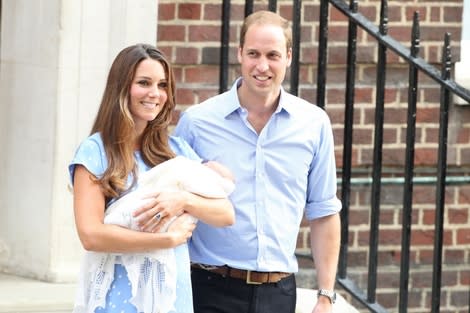What the Royal Baby's Birth Means for the Status Quo in Britain
Vicki Woods

Everything was supposed to change, and change utterly, when the new royal baby was born. But-this being the United Kingdom, which (when it is covered in bunting and cannons are firing in London's parks) feels more like it is United Ruritania-everything stayed the same.
British prime minister David Cameron had planned something special to welcome the birth of the Duke and Duchess of Cambridge's first child. In a burst of modernizing egalitarianism, he ditched the pragmatically ruthless English system of royal primogeniture, which for centuries has meant that the heir to the ruling monarch's throne is his eldest son, and his heir in turn is his eldest son, and so on. Though these islands have had three particularly brilliant-and long-reigning-queens (Elizabeth I, Victoria, and Elizabeth II), the only reason female persons ever became heads of state was if the royal family ran out of boys. Queens who could not produce boys were nothing but nuisances and dealt with variously: divorced, bought off, put away in the Tower of London, occasionally butchered so spectacularly as to make great TV plotlines (as fans of The Tudors will know).
So it was odd to realize that for the first time in three centuries it absolutely did not matter whether William and Catherine's first child was a little princess or a baby princeling. Either way, the newborn would immediately slot into her (or his) position as third in the line to the throne. Throughout history, firstborn princesses were displaced from the succession by annoying kid brothers. This one would not have been. She would know from the start of her life that she would one day become the reigning queen of the United Kingdom. For anyone who did English history, this was a stark change that Cameron made in the cause of fairness and sexual equality.
Most of the girls (and women) I talked to wanted it to be a girl. Most people thought it would be a girl. The most convincing theory I read was that helicopter pilots (as William is) always have girls. Helicopter pilots' wives began writing on websites that all their husbands' friends and colleagues had two girls.
See more:10 Best Beauty Secrets and Tips
I wanted it to be a boy. I liked the idea that the Queen would have a son, a grandson, and a great-grandson all in a row, something that has not been the case since Queen Victoria's time (Queen Elizabeth's great-great-grandmother). Two royal kids per generation is fine. I like a small, tight, close-knit royal family, not a huge, sprawling, expensive, multi-generational one, with extended members who need housing and squads of close-protection officers to guard them. And finally, if the first baby is a girl, and is destined to be the next monarch, what do you do with all the spare princes? Princesses are perfectly okay hanging around and being decorative. The fashion industry needs and uses them. Photographers are always happy to see them. Spare princes need real jobs, though.
See more: 2013 Fashion Trends: Denim Guide
I also believe that Catherine Middleton, now Duchess of Cambridge and mother of a future king of the United Kingdom, is savvy enough to modernize the royal family by being herself, without any fussbudget politicians needing to fine-tune her. She is a middle-class girl, who has been beloved all of her life by her close, hardworking, middle-class family. My former colleague and society expert, Celestria Noel says: "All upper-class girls are unwanted." (She can say that; she is upper-class herself.) Diana, the woman who would have been Catherine's mother-in-law, was an upper-class girl who knew-all of her life-that she was an unwanted child: the most unwanted in her family. She told her secret biographer: "I was supposed to be a boy," and you only have to look at the Spencer family tree to see that. Her mother, married to the eighth Earl Spencer and viscountess of Althorp, was pregnant five times: she delivered a girl, another girl, a boy who lived only ten hours, a girl (Diana) and-finally-a son and heir, Charles Spencer, the ninth earl, before walking out on her marriage. Diana was six, her baby brother was three, and it was he who inherited the house, the land, and the art collection. Catherine's family won't be like that.
See more from Vogue:
Best Met Gala Looks of All Time
Michelle Obama's Best-Dressed Moments
The Sexiest You: Lingerie Guide
Vogue's Most Beautiful Wedding Photos

